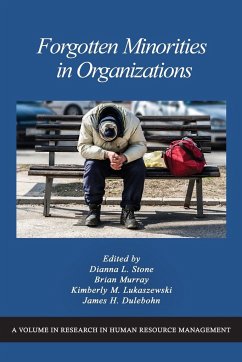People have long made invidious distinctions between individuals (e.g., the clean and the unclean, good and evil, black and white, sacred and profane, etc.) (Smith, 1996), and these distinctions affect the degree to which individuals experience prejudice, unfair discrimination, and oppression in organizations and society as a whole. As a result, there has been an increased interest in research on these distinctions and unfair discrimination in organizations. Despite this research, most of the studies have focused on only a subset of minorities including African Americans, women, older workers, and people with physical disabilities (Dipboye & Colella, 2005). A number of other minorities have been forgotten or neglected by organizational researchers including people with neurological or psychological disabilities, veterans, Native Americans, people with a criminal history, and those who come from low socioeconomic or poor backgrounds. Thus, the primary purposes of this issue of Research in HRM is to foster research on "Forgotten Minorities" or those who are members of groups that have been excluded from organizations and neglected by organizational research. In view of these arguments, this issue (a) presents a brief review of the organizational research on the exclusion and repudiation of people who are forgotten minorities, (b) offers directions for future research on these outgroup members, and (c) considers key implications for practice that can facilitate the inclusion of forgotten minorities in organizations.








